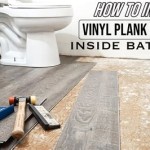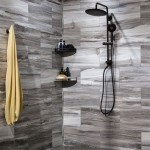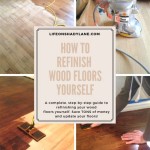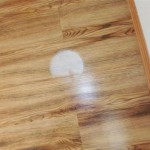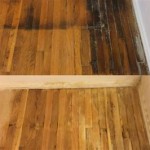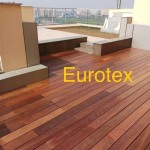Strand Woven Bamboo Flooring: Durability, Sustainability, and Aesthetic Appeal
Strand woven bamboo flooring represents a significant advancement in sustainable and durable flooring options. Unlike traditional bamboo flooring, which is constructed from strips of bamboo glued together horizontally or vertically, strand woven bamboo utilizes the entire stalk, compressing and weaving the fibers under intense pressure and heat. This process creates a material with exceptional density and hardness, making it a suitable alternative to hardwood flooring.
The growing interest in eco-friendly building materials, coupled with the superior performance characteristics of strand woven bamboo, has led to its increased popularity in both residential and commercial applications. This article will delve into the key aspects of strand woven bamboo flooring, covering its manufacturing process, advantages, maintenance, and considerations for installation.
Manufacturing Process: From Bamboo Stalk to Durable Flooring
The journey of strand woven bamboo flooring begins with the harvesting of mature bamboo stalks, typically between five to seven years old. These mature stalks possess the necessary strength and density required for the manufacturing process. The harvesting process is crucial for sustainability; responsible manufacturers practice selective harvesting, ensuring that the bamboo forests can regenerate naturally and maintain their ecological balance. Rapid regrowth is a defining characteristic of bamboo, making it a renewable resource compared to traditional hardwoods that require decades to mature.
Once harvested, the bamboo stalks are transported to a processing facility. Here, the stalks are shredded into long, thin strands. These strands are then saturated with a resin binder. The choice of resin is significant; manufacturers commonly utilize formaldehyde-free or low-VOC (Volatile Organic Compound) resins to minimize environmental impact and ensure a healthier indoor air quality. The saturated strands are then subjected to extreme pressure and heat in a mold. This process compresses the strands, interweaving them tightly together and bonding them with the resin to form a solid block. The resulting block is considerably denser and harder than the original bamboo stalk.
After the compression and bonding phase, the solid block undergoes a cooling process to stabilize the material. Once cooled, the block is then milled and shaped into individual flooring planks. These planks can be manufactured in various sizes and thicknesses to meet different installation requirements. The surface of the planks is then sanded and finished with a protective coating. This coating provides resistance to scratches, wear, and moisture, enhancing the longevity and aesthetic appeal of the flooring. The finishing process often involves multiple layers of sealant and UV protectant to ensure optimal performance.
Quality control is a crucial step throughout the entire manufacturing process. Manufacturers rigorously test the flooring for hardness, density, moisture content, and finish durability. This ensures that the strand woven bamboo flooring meets the required industry standards and provides customers with a product that is both aesthetically pleasing and structurally sound.
Advantages of Strand Woven Bamboo Flooring: Durability, Sustainability, and Aesthetics
Strand woven bamboo flooring boasts several advantages that make it a compelling choice for homeowners and builders alike. These advantages can be categorized into three primary areas: durability, sustainability, and aesthetics.
Durability: The unique manufacturing process of strand woven bamboo flooring results in a material that is remarkably durable. Due to the high-density compression of the bamboo strands, this type of flooring is significantly harder than many traditional hardwood species, including oak and maple. The Janka hardness test, a common measure of wood's resistance to indentation, typically rates strand woven bamboo flooring between 3000 and 5000, far exceeding the ratings of many common hardwoods. This exceptional hardness makes it resistant to scratches, dents, and wear, making it suitable for high-traffic areas, homes with pets, and commercial applications. The robust construction also contributes to its dimensional stability, meaning it is less likely to expand or contract excessively with changes in humidity and temperature. This stability is crucial in preventing warping, cracking, and other issues that can plague traditional hardwood floors. The protective finish applied to the surface further enhances its durability by providing a barrier against moisture and staining.
Sustainability: Bamboo's rapid growth cycle distinguishes it as a highly sustainable flooring material. Unlike hardwood trees that take decades to mature, bamboo can be harvested every five to seven years. This rapid renewability minimizes the environmental impact associated with deforestation. Furthermore, bamboo requires significantly less water and pesticides to grow compared to hardwood trees, reducing the ecological footprint of its cultivation. The use of formaldehyde-free or low-VOC resins in the manufacturing process further enhances its sustainability by minimizing harmful emissions. Many strand woven bamboo flooring products are certified by organizations like the Forest Stewardship Council (FSC) or the Leadership in Energy and Environmental Design (LEED), ensuring that they meet strict sustainability standards. Choosing strand woven bamboo flooring helps support responsible forestry practices and contributes to a healthier environment.
Aesthetics: Beyond its durability and sustainability, strand woven bamboo flooring offers a unique and appealing aesthetic. The interwoven strands create a distinctive grain pattern that is both visually interesting and subtly elegant. This pattern differs significantly from the linear grain of traditional bamboo flooring, offering a more textured and sophisticated look. Strand woven bamboo flooring is available in a range of colors, from light natural tones to darker, richer shades. These colors are achieved through various staining and carbonization processes, allowing homeowners to choose a color that complements their interior décor. The smooth, finished surface of the flooring provides a comfortable and inviting feel underfoot. It can be easily paired with a variety of furniture styles and design schemes, making it a versatile choice for any home or commercial space. The unique aesthetic of strand woven bamboo flooring can add a touch of natural beauty and sophistication to any room.
Maintenance and Installation Considerations
Maintaining strand woven bamboo flooring is relatively straightforward, contributing to its long-term appeal. Regular sweeping or vacuuming is essential to remove dirt and debris that can scratch the surface. A damp mop with a mild, pH-neutral cleaner can be used to clean the floor periodically. It is crucial to avoid excessive water, as this can potentially damage the flooring over time. Using floor mats at entryways and high-traffic areas can help to protect the surface from wear and tear. Additionally, placing felt pads under furniture legs can prevent scratches and dents. Although the protective finish provides resistance to staining, spills should be cleaned up promptly to prevent any potential discoloration.
The installation of strand woven bamboo flooring is similar to that of traditional hardwood flooring. It can be installed as a floating floor, where the planks are connected edge-to-edge and are not directly attached to the subfloor. Alternatively, it can be glued down directly to a concrete or plywood subfloor. It is important to ensure that the subfloor is level, clean, and dry before installation. Allowing the flooring to acclimate to the room's temperature and humidity for several days prior to installation is crucial for preventing expansion and contraction issues. A moisture barrier should be installed between the subfloor and the flooring to protect against moisture penetration. While experienced DIYers can often handle the installation process, professional installation is recommended to ensure proper execution and optimal performance.
Several factors should be considered when choosing strand woven bamboo flooring. The thickness of the planks should be appropriate for the intended use. Thicker planks generally offer greater durability and stability. The finish applied to the flooring is also a critical consideration. A high-quality finish should be resistant to scratches, wear, and moisture. It is also important to consider the color and grain pattern of the flooring to ensure that it complements the overall design scheme of the room. Finally, purchasing from a reputable manufacturer ensures that the flooring meets the required quality standards and is backed by a warranty. By carefully considering these factors, homeowners can select strand woven bamboo flooring that will provide years of beauty and performance.

What Is Strand Woven Bamboo Flooring The Company

Strand Woven Bamboo Flooring Modern Living Room Other By Shanghai Linfeng Parquet Co Ltd Houzz

How Is Strand Woven Bamboo Flooring Made The Company

Strand Woven Bamboo Flooring Traditional Living Room Other By Shanghai Linfeng Parquet Co Ltd Houzz

Natural Solid Strand Woven Bamboo Lexfloor

Strand Woven Bamboo Flooring Traditional Living Room Other By Shanghai Linfeng Parquet Co Ltd Houzz

Strand Woven Bamboo Flooring Natural Carbonized Tiger

San Jose Project Spotlight Strand Woven Bamboo Flooring

Home Decorators Collection Harvest 3 8 In T X 4 9 W Strand Woven Engineered Bamboo Flooring 24 6 Sqft Case Hl271h The Depot

Natural Strand Woven Bamboo Flooring July Bambu Is A China Supplier
Related Posts

